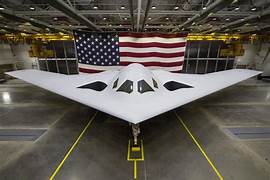The Department of Defense Pentagon’ is implementing significant changes to its nuclear deterrence strategy in response to growing challenges from multiple nuclear-capable adversaries. Key defense officials have highlighted the need for modernization and strategic adjustments as China and Russia expand their nuclear capabilities and arms control agreements face uncertainty beyond February 2025.
The New Nuclear Reality
The U.S. faces an unprecedented strategic environment characterized by:
- Multiple nuclear peer competitors
- Rapid modernization of adversary arsenals
- Growing role of nuclear weapons in competitor strategies
- Increased complexity in deterrence requirements
Strategic Adjustments
Key Policy Changes
- Simultaneous deterrence capabilities against multiple adversaries
- Integration of conventional and nuclear forces
- Enhanced escalation management protocols
- Strengthened coordination with allies
Pentagon’ Modernization Initiatives
The DOD, working with the National Nuclear Security Administration, is implementing several critical updates:
- Development of the B61-13 gravity bomb
- Enhanced readiness of Ohio-class nuclear submarines
- Upgraded nuclear command and control systems
- Modernized infrastructure support
The 491 Report Framework
The recently submitted 491 Report outlines four core directives:
- Multi-Adversary Deterrence
- Capability to deter multiple nuclear threats
- Flexible response options
- Enhanced strategic planning
- Integrated Capabilities
- Combination of nuclear and non-nuclear assets
- Coordinated deployment strategies
- Enhanced operational flexibility
- Escalation Management
- Improved response protocols
- Strategic attack contingencies
- Crisis stability measures
- Allied Coordination
- Deeper consultation processes
- Combined planning initiatives
- Strengthened deterrence commitments
Looking Toward 2030
The DOD’s strategy emphasizes:
- Comprehensive modernization of nuclear forces
- Flexible adaptation to emerging threats
- Enhanced infrastructure development
- Improved command and control systems
As the global nuclear landscape becomes increasingly complex, the Pentagon’s updated strategy reflects a necessary evolution in U.S. deterrence policy. The combination of modernization initiatives, enhanced coordination with allies, and flexible response capabilities positions the U.S. to maintain effective deterrence against multiple nuclear adversaries while preserving strategic stability. Success will require sustained investment, strategic patience, and close cooperation with international partners.











